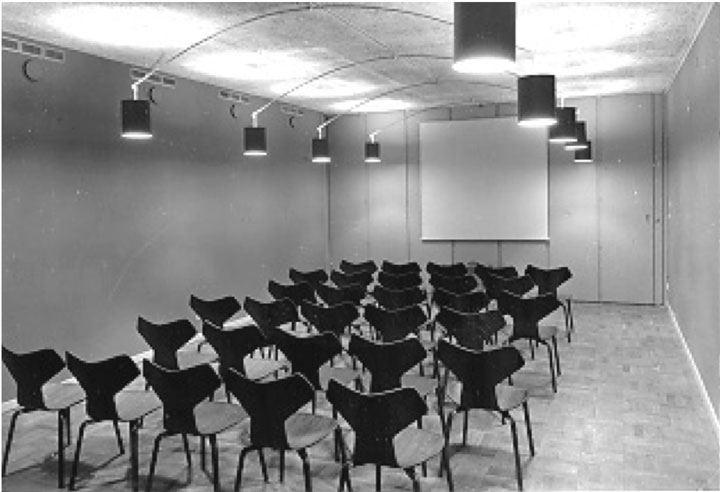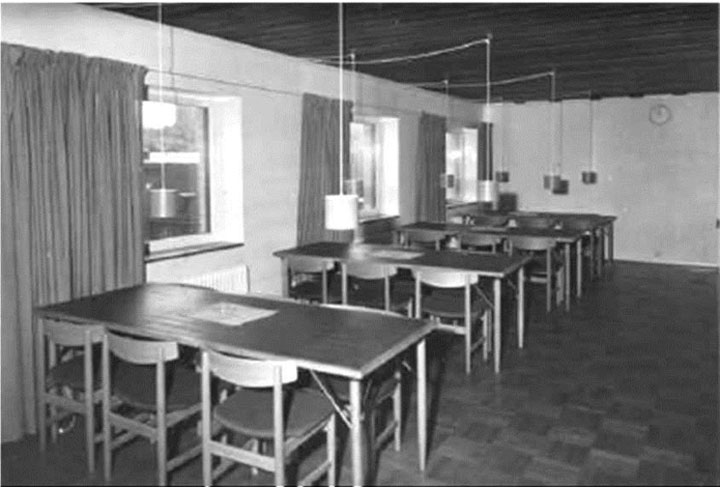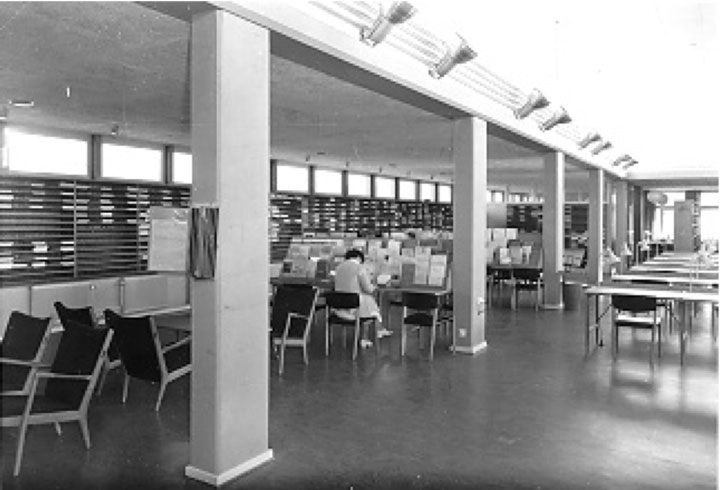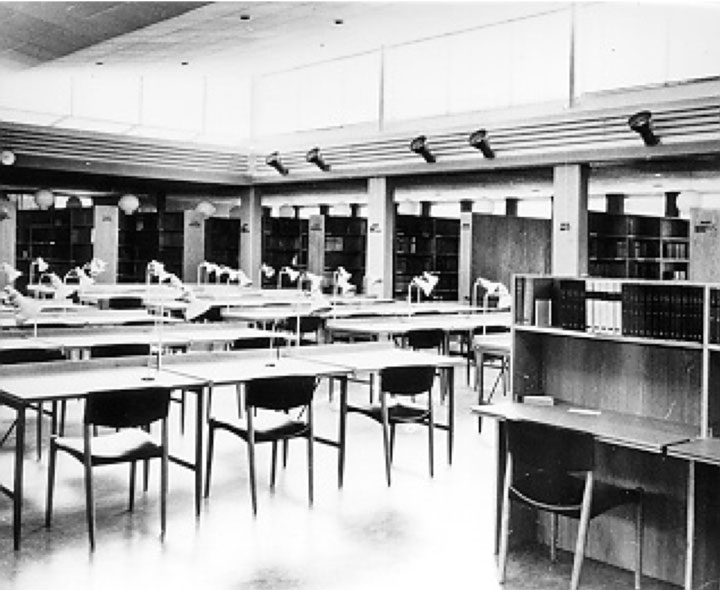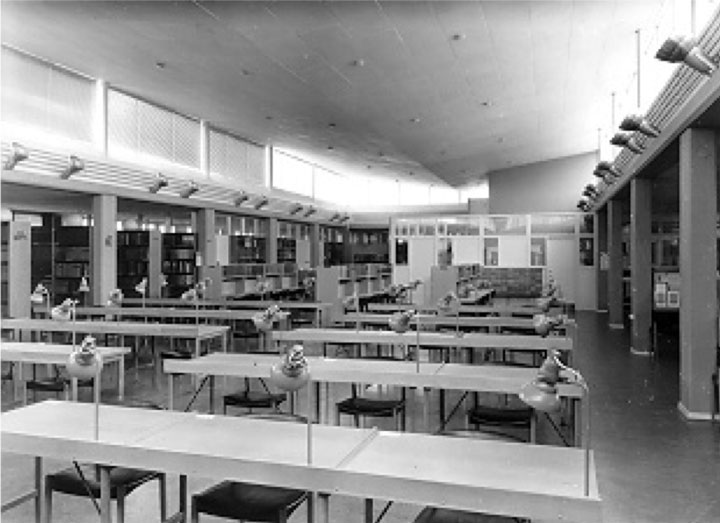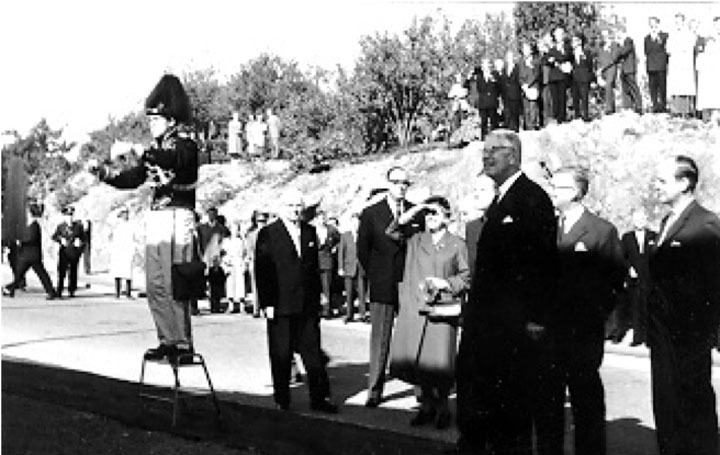
ANNIVERSARY. Sixty years ago, when the Biomedical Library was inaugurated, the typical visitors were researchers looking for references or articles. Today the library is increasingly visited by students who primarily want a place where they can do their assignments and study.
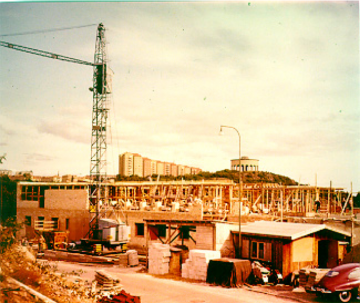
60 years have passed since the building for the Biomedical Library was dedicated by King Gustaf VI Adolf and Queen Louise. The first medical library, formed when the Gothenburg Medical College was established in 1948, had to move around for a few years – from a small room at the Gothenburg City Library to a ramshackle pavilion at Sahlgrenska University Hospital to a space in the rheumatism clinic.
Intercoms and conveyor belt
When the time came to build the new facilities at Medicinareberget, Klas Anshelm, an architect trained at Chalmers University of Technology, received the assignment. The library was centrally located between the clinics at Sahlgrenska University Hospital and the more theoretical environments at Medicinareberget.

After two years of construction, the library could move into the building in the summer of 1959. The library’s tasteful decor featured shades of gray, with black banisters as a graphic accent, and it was furnished with stylish design classics. The library also led the way technologically, with intercoms in all rooms and a circulation desk with a conveyor belt. The festive September 18 dedication, complete with Swedish royalty, was not dampened by the fact that the bookshelves in the stacks had tumbled during the night like a giant row of dominos.
A building for people
Since its inauguration 60 years ago, the building’s exterior appearance has not changed, while its collection, and the role it plays for researchers and students, has. Computerization and digitization of books, magazines and knowledge has increased accessibility, and now researchers may access articles on their computers using the library’s subscriptions. Meanwhile, the older collections in the building remain.

Annelie Janred, head of the Biomedical Library, says that though the building was constructed as a place for collections, it now focuses more on being a building for people.
“Sixty years ago visitors consisted largely of researchers looking for references and articles for their research. Today’s visitors are primarily students who need places to study,” Janred explains.
A thousand visitors in a day
And many students use the Biomedical Library as their place to study. On the first Monday in September a thousand visitors in a single day were noted. With the increase in the number of visitors, accessibility to the premises is a pressing issue for the library. Another challenge is to become more closely involved with the students and be physically where the students are.
“Of course, we also want to continue providing researchers with the services they require, with the higher prices and the increasing demand that entails in terms of interlibrary loans and document delivery.”
The Biomedical Library now offers support to both researchers and students through the research service group and the teaching team.
”For researchers this involves a lot of help with systematic searches at different levels. For students, this involves teaching at the program or course level,” says Janred.
TEXT: ELIN LINDSTRÖM
PHOTO: ARKIV
